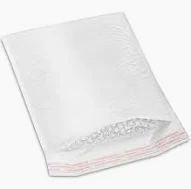Sustainable and Eco-Friendly Food Storage Solutions for a Greener Future
The Rise of Eco-Friendly Food Containers
In an era where environmental consciousness is gaining prominence, the demand for eco-friendly food containers has surged. This shift is not merely a trend but a necessity, driven by increasing awareness of plastic pollution and its detrimental effects on our planet. As consumers become more mindful of their choices, eco-friendly food containers are emerging as a sustainable alternative to traditional packaging.
Understanding Eco-Friendly Food Containers
Eco-friendly food containers are designed with the environment in mind. They are typically made from renewable resources, biodegradable materials, or recycled products, which help reduce the carbon footprint associated with food packaging. Common materials include glass, stainless steel, bamboo, and compostable bioplastics. These containers not only offer durability and safety for food storage but also lessen the impact on the environment.
The Environmental Impact of Traditional Containers
Traditional food containers, often made of single-use plastics, pose a significant threat to the environment. They contribute to the global plastic crisis, with millions of tons ending up in landfills and oceans each year. These plastics can take hundreds of years to decompose, causing harm to wildlife and ecosystems. The production of plastic also contributes to greenhouse gas emissions, exacerbating climate change. By transitioning to eco-friendly alternatives, we can significantly reduce waste and protect our planet for future generations.
Benefits of Eco-Friendly Food Containers
1. Sustainability One of the primary benefits of eco-friendly food containers is their sustainable nature. Unlike plastic, materials such as glass and stainless steel can be reused indefinitely, promoting a circular economy. Biodegradable containers break down naturally, leaving no harmful residue behind.
eco food containers

2. Health Safety Many eco-friendly food containers are free from harmful chemicals commonly found in plastic, such as BPA and phthalates. This ensures that food remains uncontaminated and safe for consumption. Moreover, materials like glass are inert and do not leach into food, making them a healthier choice for families.
3. Functionality and Design Eco-friendly containers are not only functional but also stylish. Companies now offer a range of aesthetically pleasing designs that cater to various consumer preferences. Whether it’s a sleek stainless steel lunchbox or a beautifully crafted bamboo container, these options encourage people to choose sustainability without sacrificing style.
4. Cost-Effectiveness While the initial investment for eco-friendly containers may be higher, they prove to be cost-effective in the long run. With their durability and reusability, these containers can save consumers money over time by reducing the need for frequent replacements and single-use products.
Making the Switch
Transitioning to eco-friendly food containers is easier than ever. Many retailers now offer a variety of sustainable options, from meal prep containers to on-the-go lunch boxes. Consumers looking to make a change can start by gradually replacing their plastic containers with eco-friendly alternatives. Simple steps such as using a glass jar for leftovers or investing in a stainless steel lunch bag can significantly reduce plastic consumption.
Conclusion
The rise of eco-friendly food containers represents a positive shift toward sustainable living. By choosing products that are gentle on the planet, consumers can contribute to a larger movement advocating for environmental responsibility. As awareness grows and options expand, eco-friendly food containers are destined to become the norm rather than the exception, paving the way for a cleaner, greener future. By making conscious choices today, we can safeguard our environment for generations to come.
-
The Best Uses for Small Trash Bags in Daily LifeNewsJul.01,2025
-
Stylish Reusable Grocery Bags TrendsNewsJul.01,2025
-
Shipping Advantages of Using Bubble Envelopes BulkNewsJul.01,2025
-
How Compostable Mailing Bags Reduce Environmental ImpactNewsJul.01,2025
-
Environmentally - Friendly Bulk Poly MailersNewsJul.01,2025
-
Eco Friendly Custom Laminated Tote BagsNewsJul.01,2025
-
Have the freedom of customizing your custom mailers any way you want! Our dedicated packaging support will help deliver you the mailing experience you need to elevate your shipping experience to the next level! Start making a strong impression on your customers and stand out from your competitors! -
LIYA uses high quality raw materials which directly purchased from large enterprises domestic and overseas such as PetroChina, Sinopec, Sabic, Equate, ExxonMobil, Dow Chemical, Total, and Borouge, ensuring the price advantage and quality of the raw materials. -
LIYA uses high quality raw materials which directly purchased from large enterprises domestic and overseas such as PetroChina, Sinopec, Sabic, Equate, ExxonMobil, Dow Chemical, Total, and Borouge, ensuring the price advantage and quality of the raw materials.





